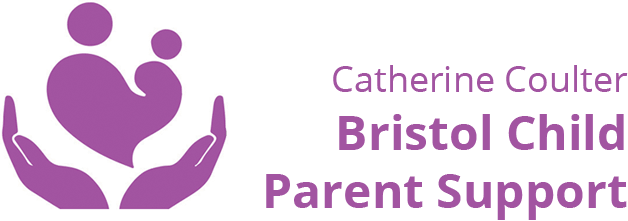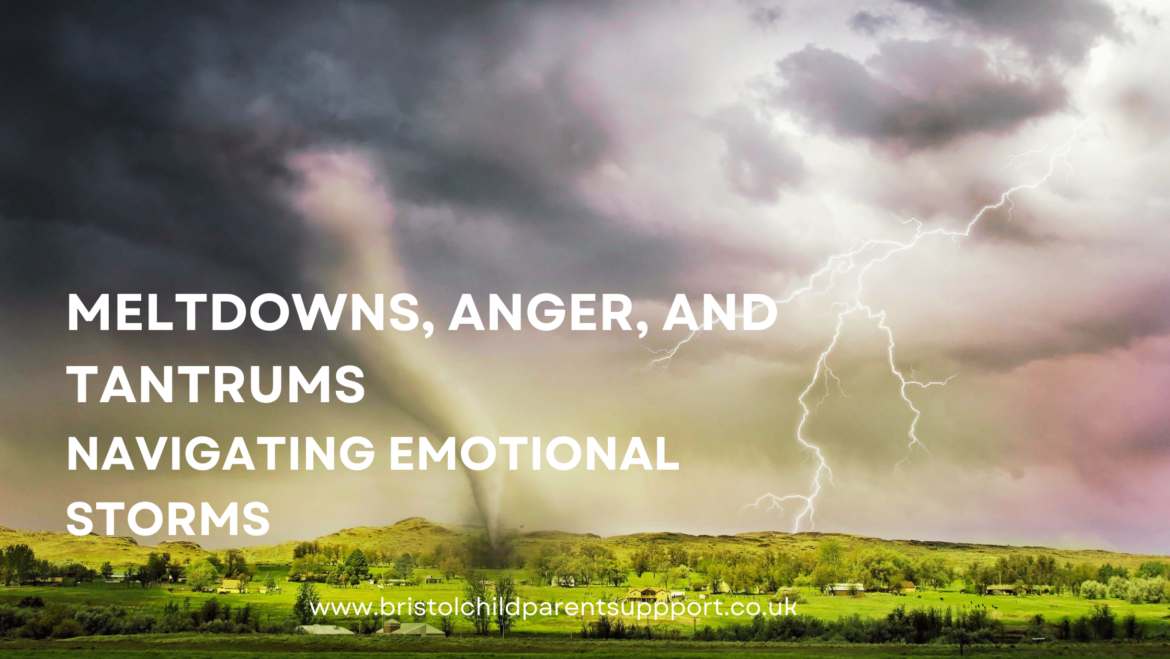As a parent, you’ve probably experienced your fair share of emotional storms with your child. Sometimes they come out of nowhere like lightening, so dealing with tantrums, meltdowns, and anger outbursts can be challenging and exhausting. But don’t worry, you’re not alone! These are familiar challenges that pretty much all parents encounter in my practice, yet we manage to weather the difficulties!!
While meltdowns, tantrums, and anger outbursts may seem similar on the surface, they have distinct characteristics, and underlying triggers. Let’s explore the differences between all three.
Why does anger have such as bad rap as an emotion?
Let’s talk about anger. It’s a tough emotion, isn’t it? It can strike like lightening, be spiky. It can be hot and even steamy, but one thing for sure, we often associate it with aggression, conflict, and destructive behaviour (what we do with it). But here’s the thing: anger is a natural and important emotion, just like fear, disappointment, frustration, and joy.

Anger has a bad reputation, but in its self, it’s not all negative. In fact, it can be quite helpful. When we feel angry, it’s a signal that something important to us has been crossed or violated. It helps us set clear boundaries and stand up for ourselves. When channelled in the right way, anger can even be a powerful motivator for positive change.
Anger can be about setting healthy boundaries
Think about it – healthy relationships can’t thrive without boundaries. And that’s where anger comes in. It lets us know when those boundaries have been crossed. But here’s the thing: most of us haven’t been taught to view anger this way or how to work with it effectively. And that’s why it’s so important to help our children understand and manage their anger from an early age.
Let’s start by tackling those anger outbursts. We’ve all been there, right? When our children explode in a fit of rage, it can be overwhelming. But remember, they’re still learning how to navigate their emotions. So, let’s find ways to help them and start with outbursts.
What is an anger outburst?
Anger outbursts occur when a child feels overwhelmed by anger or frustration. These outbursts can happen at any age and are often short but intense. They are often a result of unmet needs, emotional dysregulation, or difficulty managing intense emotions. Key features of anger outbursts include:
- Your child may express their anger through yelling, hitting, throwing objects, or engaging in aggressive behaviours.
- Triggers: various factors, such as feeling misunderstood, experiencing injustice, or facing challenges, transitions can trigger anger outbursts.
- Duration: The duration of anger outbursts can vary, but they typically subside once the child’s anger begins to dissipate. The intensity is usually less than for a tantrum and for meltdowns.
How can you respond?
Take a look at my most recent blog, Positive Discipline versus Punishment for ideas.
Stay calm and model appropriate ways to manage anger. Encourage the child to express their feelings verbally and provide guidance on problem-solving strategies. Help them identify triggers and develop coping mechanisms to regulate their emotions. I know for some parents it is harder to co-regulate anger than fear or anxiety, and that is often due to social conditioning.
The Impact of Social Conditioning
So, let’s break it down a bit. In our society, there’s this idea that anger is somehow a negative or unacceptable emotion, especially for women. We’re often taught that it’s not “ladylike” or polite to express anger openly. I also think men have their conditioning, too. This social conditioning can lead to a tendency to suppress or hide our anger, even from ourselves.
It’s also important for us as parents to examine our own beliefs and attitudes towards anger. Are we inadvertently passing on the message that anger is something to be ashamed of or hidden? By being aware of our own conditioning and working on our own relationship with anger, we can model healthy emotional expression for our children. Whilst you are reading this and it may stir up some feelings, I hope you can find compassion in disarming any blame that may come up for you.
Remember, emotions are a natural part of being human, and anger is no exception.
When we internalise our anger, it can have some unintended consequences. It may lead to feelings of resentment, frustration, or even physical symptoms like headaches or stomachaches. Suppressing anger can also have an impact on our health and relationships, as it may manifest in passive-aggressive actions or accumulate gradually, leading to a more intense outburst in the future. These types of behaviours are called “internalising.”
What do you mean by internalising behaviours?
Internalising behaviours refer to the tendency to internalise or turn inward with emotional distress. Individuals who exhibit internalising behaviours often experience difficulties in regulating their emotions. As children become older, you may see:
- Social withdrawal or isolation
- Excessive worrying or rumination
- Self-blame or self-criticism (you may notice your child telling you they are stupid a lot. Get things wrong all the time).
- Emotional sensitivity or vulnerability
On the other hand, your child may show more outward “externalising” behaviour of anger such as aggression (this can involve physical aggression (hitting, pushing) or verbal aggression (name-calling, threats) and defiance.
It is important to note that all of us can exhibit a combination of both internalising and externalising behaviours, and these behaviours can vary across different situations and contexts. Additionally, internalising and externalising behaviours can be influenced by various factors, including genetics, environment, and individual temperament (temperament matters).
What is a Tantrum?
They are neurotypical and not to do with your parenting, but their brain!!
Tantrums are storms of feelings, and your child may seem out of control. They are not always about power and control but sometimes distress.
Tantrums can involve crying, screaming, kicking, hitting, or even breath-holding. Research shows that areas of the brain associated with emotion and language development are not fully developed until late adolescence. Therefore, children may not understand why they’re feeling a certain way or why they act a certain way.
As a result, young children may struggle to regulate their emotions effectively, leading to tantrums when they become overwhelmed or frustrated.
When a child experiences a tantrum, there are several neurological processes at play. The amygdala, an area of the brain involved in emotional responses, can become overactivated, triggering intense emotional reactions. This can lead to a fight-or-flight response, causing the child to exhibit behaviours such as screaming, crying, or physical outbursts (kicking, biting, and throwing).
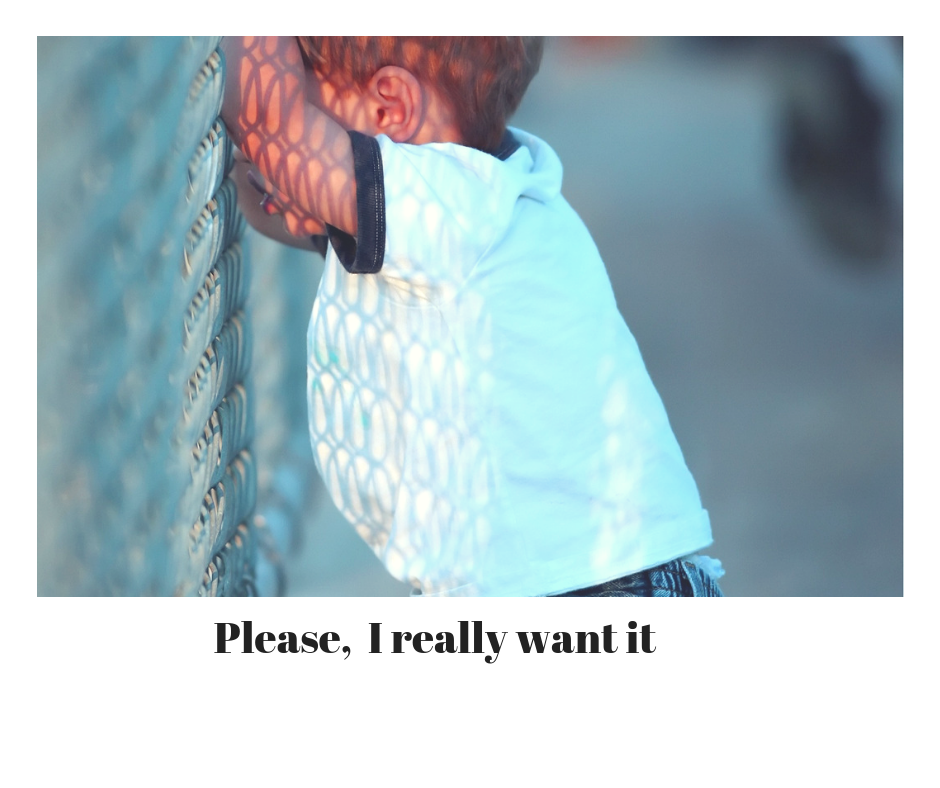
Additionally, the child’s limited ability to communicate their needs or frustrations effectively can influence tantrums. Language and communication skills are still developing during early childhood, making it challenging for children to express themselves verbally. This frustration can further contribute to the intensity and duration of tantrums.
Remember, all children between the ages 0-7, It is normal for a child to struggle with executive functioning skills such as:
- Planning
- Organising time and materials
- Making decisions
- Shifting from one situation to another ( sequencing)
- Controlling emotions
- Inhibition and impulsivity
- Learning from past mistakes (I know this can be hard for parents to understand, I am with you).

Tantrums can occur at various ages, but they are most commonly observed in children between the ages of 1 and 4. The could be defined as toddler or preschooler tantrums:
- Toddler tantrums (1-2 years old): Toddlers often have tantrums due to frustration caused by their limited language skills and inability to communicate their needs effectively.
- Preschooler tantrums (3-4 years old): As children enter preschool years, tantrums may still occur but tend to decrease in frequency and intensity.
You can listen to my Soundcloud podcast below to learn about triggers and to manage the two types of tantrums below or read on.
Distress versus Nero tantrum listen below:
Here are some common triggers for tantrums:
- Frustration: When children encounter obstacles or challenges that they find difficult to overcome, they may become frustrated and have a tantrum. This can happen when they are unable to communicate their needs or complete a task.
- Tiredness or hunger: When children are tired or hungry, they may have less patience and emotional regulation, making them more prone to tantrums. Make sure they have regular meals and adequate sleep can help minimise these triggers.
- Overstimulation and understimulation (boredom): Overwhelming sensory input, such as loud noises, bright lights, crowded environments, or excessive activity, can overwhelm children and lead to tantrums. Some children may be more sensitive to sensory stimuli than others. On the other hand, your child may be bored.
- Your emotional state: It may come as a surprise, but children view you as their everything and are highly perceptive regarding sensing your emotional state. As a result, they will respond accordingly.
- Transitions or changes in routine: Children often thrive on predictability and routine. Sudden changes, transitions between activities, or disruptions to their usual schedule can be challenging for them to handle.
- Emotional triggers: Strong emotions, such as anger, sadness, or disappointment, can trigger tantrums in children. It is also important to know that trauma can be a trigger.
- Attention-seeking: Some children may engage in tantrums to gain attention. They may have learned that tantrums can be effective in getting what they want or capturing the attention of you.
- Lack of control or autonomy: Children may have tantrums when they feel a lack of control or autonomy over their choices or decisions.
It is good to remember these 7 daily activities to provide a balanced and healthy mind day.
Ref: Dr Dan Siegel Health Mind Platter https://drdansiegel.com/healthy-mind-platter/
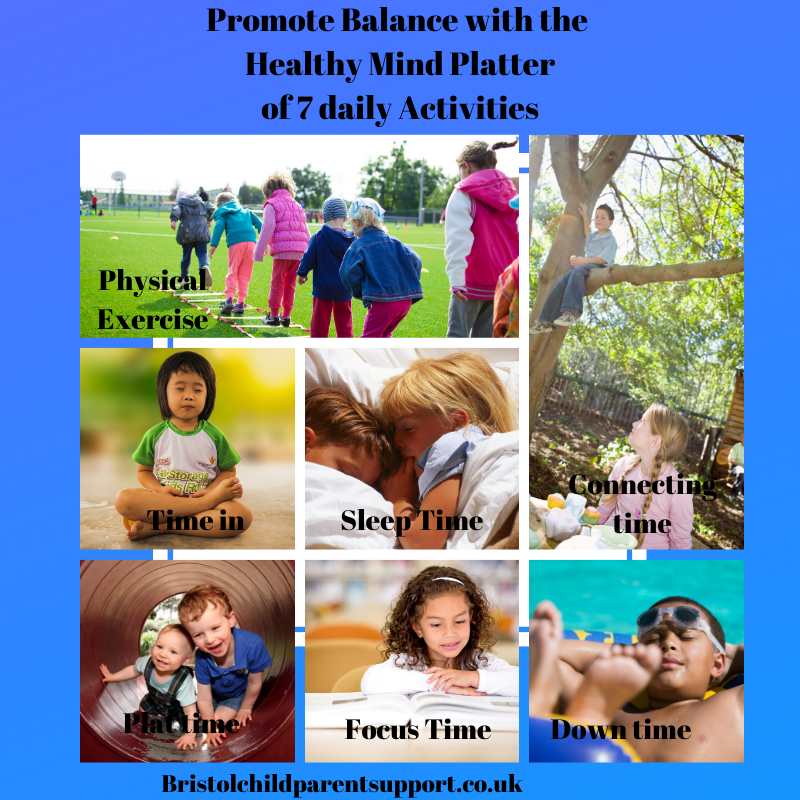
Just remember, every child is different, so what sets off their tantrums might not be the same as someone else’s. Knowing what sets off your child’s tantrums can help you handle them better. Talking it out, being clear with rules, giving them ways to let out their feelings, and being there for them can all make tantrums less of a problem.
What are Meltdowns?
In contrast, meltdowns can occur in individuals of any age and are not solely related to communication challenges. While communication difficulties can contribute to meltdowns, they are often a result of a combination of factors, including sensory overload. This can include hypersensitivity to certain stimuli, such as loud noises or bright lights, or difficulty filtering out irrelevant sensory input emotional dysregulation, and difficulty coping with stress or change.
They are often seen in children with sensory processing difficulties, autism spectrum disorder, or other neurodevelopmental conditions.
They may scream, cry, become aggressive, or engage in repetitive behaviours. Meltdowns are not intentional and are often a result of feeling overwhelmed by sensory stimuli or emotional triggers.
During a meltdown, your child may become completely overwhelmed and lose control of their emotions and behaviours. You may observe:
- Your child may go from 0 to 100 to anger in seconds.
- Your child continues to be upset when other children have moved on.
- Your child takes a long time to calm down.
- They continue to cope with a situation as they did when they were younger and past their developmental age.
The key difference between tantrums and meltdowns lies in their triggers and intensity.
Tantrums are usually triggered by specific situations or desires. In contrast, meltdowns can occur in individuals of any age and are not solely related to communication challenges. While communication difficulties can contribute to meltdowns, they are often a result of a combination of factors, including sensory overload, emotional dysregulation, and difficulty coping with stress or change.
It’s important to note that the terms “tantrum” and “meltdown” are not strictly defined in neuroscience and can vary in their usage. The underlying neuroscience of tantrums and meltdowns can overlap, and individual experiences may differ.
Understanding these differences can help you to respond appropriately and provide the necessary support.
General tips on helping your child ” cool down”
When helping your child “cool down” during a meltdown or tantrum, it’s important to prioritise de-escalation and safety. If your child is hurting themselves or others, make sure immediate safety by creating a cushioned area for headbanging or gently holding them to prevent harm. If you’re driving, it may be necessary to pull over and wait until they are calm before continuing.
Once safety is ensured, provide clear and consistent limits. It can be helpful to have a pre-planned safety plan in place, discussed with your child beforehand. Keep it simple and say something like, “When this behaviour arises, then this will happen.” This helps establish boundaries and expectations.

Remember to separate the behaviour from the child. Your child is not inherently bad or unacceptable, but their behaviour may be. Schedule review meetings to discuss and decide on a consistent plan of action. Talk about safe places to go or calming techniques that can be used during these situations. Keep in mind that change takes time and it won’t happen overnight.
By prioritising safety, setting clear limits, and separating the behaviour from the child. (This is called externalising the problem). You can help your child learn to regulate their emotions and navigate challenging situations more effectively.
For tantrums, setting clear boundaries, offering comfort, and teaching emotional regulation strategies can be helpful.
For meltdowns, creating a calm and safe environment, providing sensory breaks, and offering reassurance and understanding can make a significant difference. Additionally, it is helpful to help your child develop interocepetion skills.
What are interoception skills?
Interoception is a term that refers to our ability to sense and understand internal sensations and signals from our body. It includes being aware of things like hunger, thirst, pain, temperature, heart rate, and even emotions. In time, if a person’s interoception is not fully developed, they may find it difficult to manage their emotions and social interactions. If someone does not recognise the signals for an emotion, they are not able to respond to it. This can result in anger becoming rage, sadness becoming distress, and so on. Other people can perceive this as dysregulation or a lack of emotional maturity.
Additionally, research suggests that children with ASD may have atypical neural connectivity between brain regions involved in interoception, such as the insula and anterior cingulate cortex. These differences in neural connectivity can impact the processing and integration of internal bodily signals, making it more challenging to accurately perceive and interpret them.
For parents, understanding interoception can be helpful in supporting their children’s emotional well-being and self-regulation.
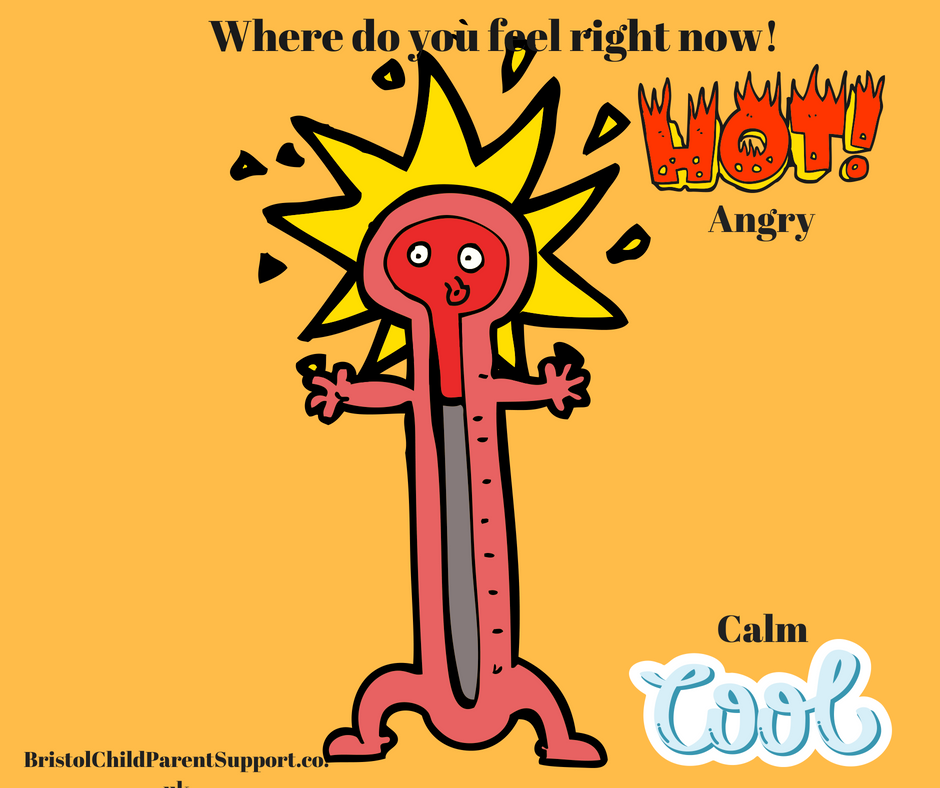
Here’s how to help your child with interoception skills:
- Encourage body awareness: Help your child develop a strong connection with their body by encouraging them to pay attention to their physical sensations. This can be done through activities like yoga, deep breathing exercises, or simply asking them how their body feels in different situations. By increasing their body awareness, they can better recognise and understand their emotions.
- Teach emotional vocabulary: Help your child identify and label their emotions by teaching them a wide range of emotional vocabulary. When they can accurately describe how they feel, it becomes easier for them to communicate their needs and emotions to others. This also helps them develop a better understanding of their own emotional experiences.
- Validate their emotions: It’s important for parents to validate their child’s emotions and let them know that it’s okay to feel a certain way. By acknowledging and accepting their emotions, you create a safe space for them to express themselves. This helps them develop a healthy relationship with their emotions and encourages emotional self-regulation.
- Model emotional regulation: Children learn a lot by observing their parents’ behaviour. Show them healthy ways to manage and regulate your own emotions. This can include taking deep breaths, using positive self-talk, or engaging in calming activities like listening to music or going for a walk. Own up to your feelings if you have a ” fizzy” and try to do it as soon as you can. Say something like, even though I lost my temper, I still love you and if you can give them a hug. We call this “rupture and repair” in attachment therapy. If there is a breakdown in communication with your child, it is crucial for them to understand that it is alright afterwards. Apologising and taking responsibility for your emotions can aid in this. This is the “repair part” By modelling these behaviours, you provide your child with effective strategies for managing their own emotions.
- Play Games: You can also help your child develop self-control through games such as the traffic light game below. More suitable for children who are at least four years old.

Red Flag: When to ask for help!!
Understanding what is considered normal development in children can help you determine when it may be necessary to seek additional support. Although all children experience intense emotions sometimes, especially during challenging situations, there are certain risk factors to think about when deciding if professional help is necessary.
- Intensity and duration: Pay attention to the intensity and length of tantrums or meltdowns. If your child consistently responds to events in an extremely powerful way, reaches a high level of emotional intensity quickly, or takes a long time to calm down after an upsetting incident, it may be a sign that additional support is necessary.
- Impact on daily/family life: Consider whether the behaviour is regularly impacting your child’s home, nursery, or school environment. If their behaviour consistently disrupts their ability to function or engage in daily activities, it may be a cause for concern. This is particularly relevant for children over the age of six who may struggle with decision-making, reactions, and understanding the consequences of their actions. However, younger children may also exhibit difficulties in these areas.
- Self-injury, harm to others, or property destruction: If your child engages in self-harming behaviours regularly harms others, or frequently destroys property, it is crucial to seek professional help promptly. These behaviours can indicate underlying emotional or behavioural challenges that require intervention.
Remember, every child is unique, and developmental milestones can vary. If you have concerns about your child’s emotional well-being or behaviour, it is always better to err on the side of caution and seek guidance from a qualified professional.
In Conclusion
While it’s true that a completely stress-free family life may be impossible, it’s important to remember that all of us, including children, experience big feelings such as anger. Each child is unique, and their emotional storms may vary. However, by practising ” good enough patience”, providing comfort, and teaching them positive ways to express their emotions, you can effectively guide them through these challenging moments. Remember, emotional growth takes time and consistency. Be patient with both yourself and your child as you navigate through these storms, the storm will pass. Celebrate small victories and progress along the way!!!
Thank you for taking the time to read this, and thank you for your commitment to the well-being of your child and your family and for your willingness to keep learning and growing. Remember: parenting is hard work. Seek help and support if you want to transform it. Contact me for a consultation or to organise a workshop for your education community or friends. Let’s create a warm, intentional, contained, and nurturing environment together. With Gratitude Catherine
Are you interested in coming together with other parents facing the same issues as you?
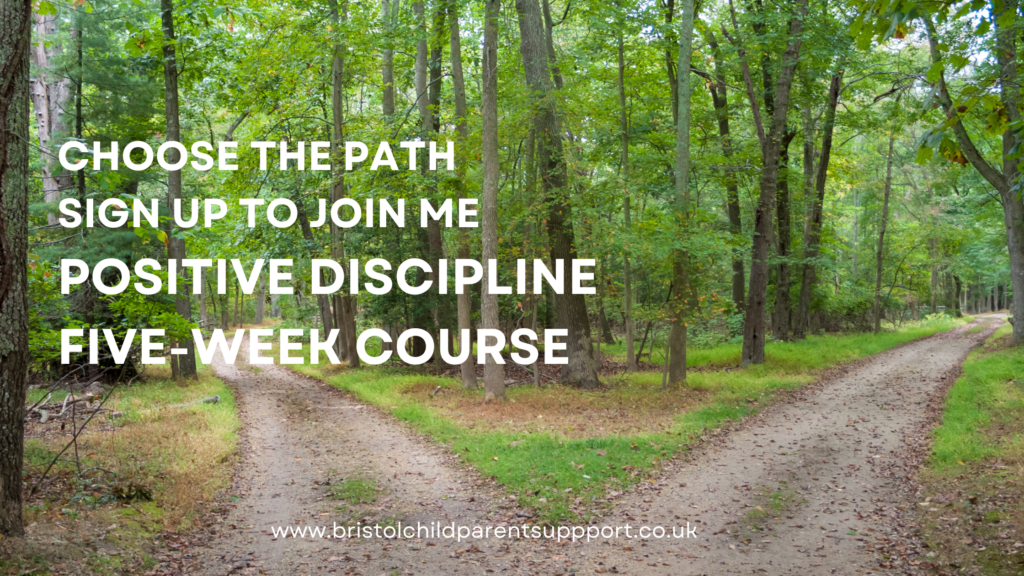
I am a certified trainer in the Incredible Years and have over three decades of experience. If you’d like to participate in an in-person five/six-week positive parenting programme during the summer/Autumn of 2024, please contact me or join my newsletter so I can add you to the mailing list for more information.
